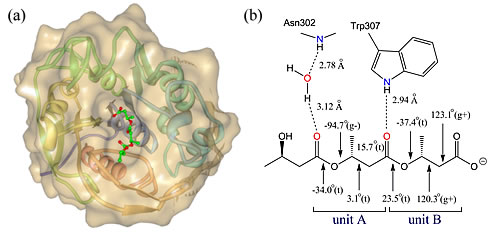at Chiba University
<2007 - Present>
Green PolymersPublication List
We have carried out conformational analysis of biodegradable polymers by the ab initio statistical mechanics and interpreted their solution properties, crystal structures, thermal properties, and enzymatic selectivities in terms of the conformational characteristics. We have been treating almost all biodegradable polymers that have been studied in academia and developed in industries: poly(3-hydroxybutyrate), poly(hydroxylvalerate), polyglycolide, poly(L-lactide), poly(DL-lactide), poly(2-hydroxybutyrate), poly(ethylene succinate), poly(butylene succinate), poly(ε-caprolactone), and Nylon4.
In recent years, we have also been investigating conformational characteristics of polymers to (a) absorb or (b) fix carbon dioxide: (a) poly(ethylene imine), poly(trimethylene imine), poly(N-methylethylene imine), and poly(N-methyltrimethylene imine); (b) poly(ethylene carbonate), poly(propylene carbonate), poly(butylene carbonate), and poly(cyclohexene carbonate).

